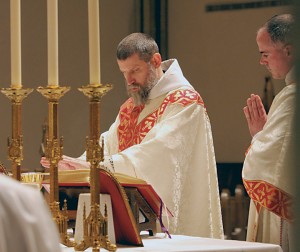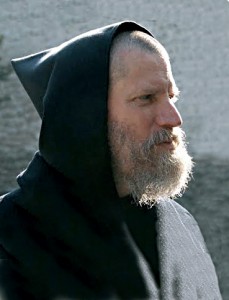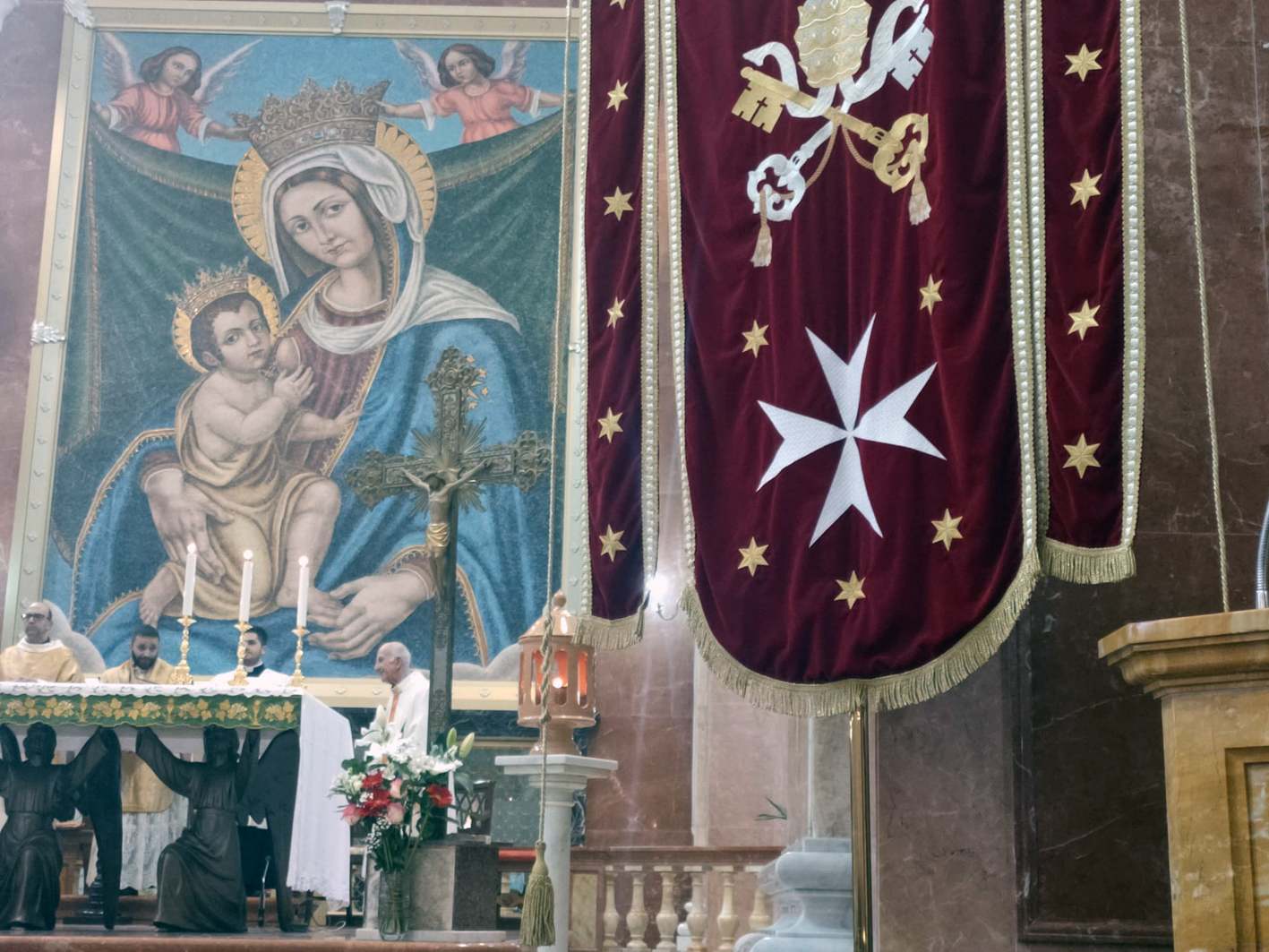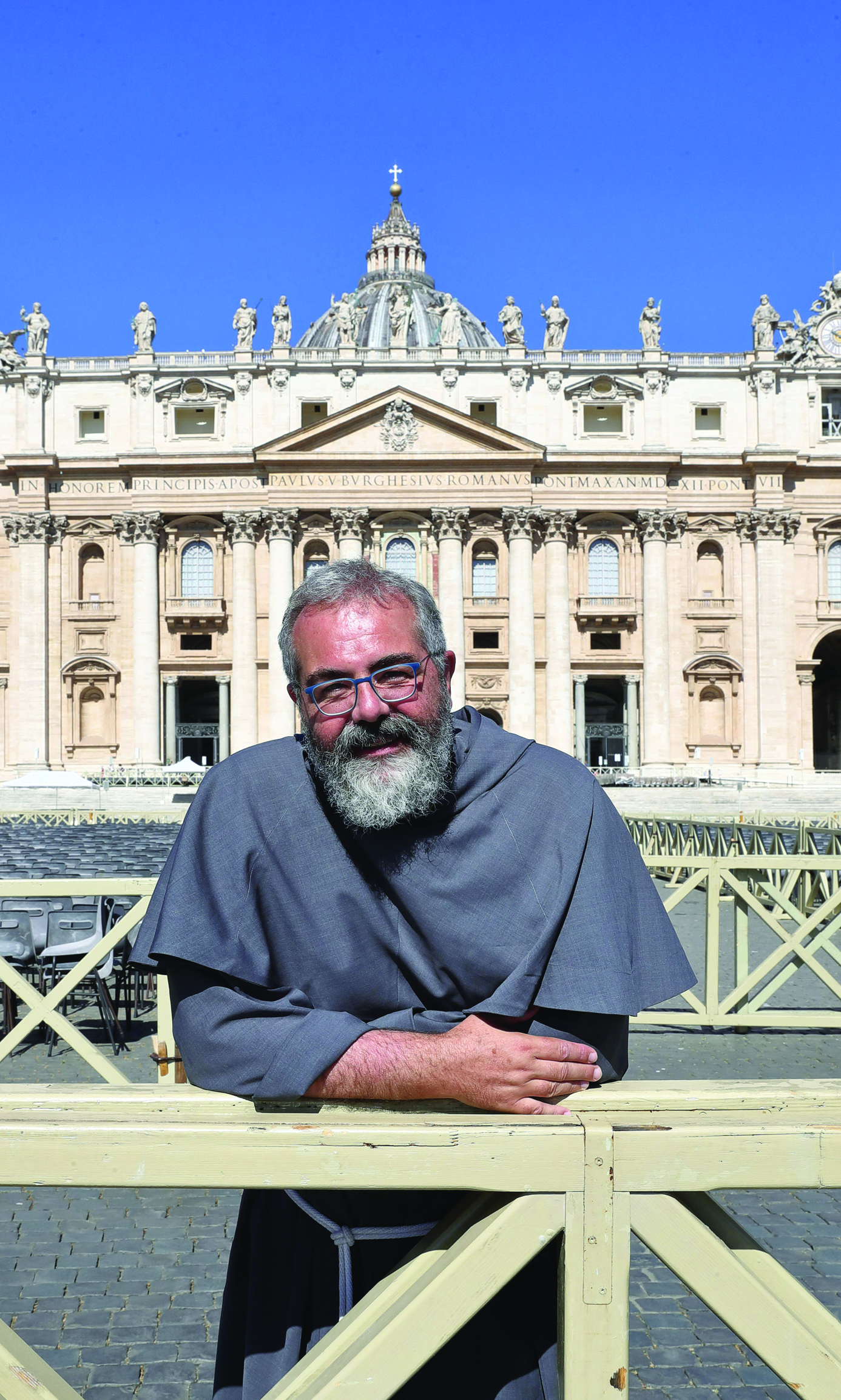Sometimes we are able to see a splendid adventure of life and in faith just at the moment that it is unfolding. And we are able to watch the struggles, and challenges, and successes, of a man, or group of men, and even to participate with them in that adventure. Such is the case with Father Cassian Folsom and the refounding of the Benedictine monastery in Norcia, Italy — the birthplace of St. Benedict in about A.D. 480 — which was closed in 1810, and reopend after 190 years in the year 2000. For what Father Folsom has done for Norcia, for what he has done for monasticism in general and Benedictine monasticism in particular, for what he has done for the Church’s liturgy (for the last three years, the monastery in Norcia has been offering Holy Mass in both uses of the Roman Rite, old and new) and for what he has taught all of us about following Christ by his Christian example, we feel privileged to have the opportunity select Cassian Folsom, who is also an old friend, as our “Person of the Year” for 2011. Cassian’s initiative is one of the “points of light” in the Church and world today.
Born in 1955 in Lynn, Massachusetts (USA), Folsom grew up in Connecticut until his path took him into religious life. He served as the vice-rector of the Pontifical Atheneum of Saint Anselm from 1997 to 2000 and is the founding prior of the Benedictine monastery Maria Sedes Sapientiae (“Mary Seat of Wisdom”) in Norcia, Italy, where he is also the rector of the Basilica of San Benedetto. A member of the US Fellowship of Catholic Scholars, he is the author of numerous studies on Roman Catholic liturgy.
In the newsletter of his monastery there is an interview with Folsom which we felt worth sharing here.
Does your decision to celebrate Mass also in the old rite respect the Second Vatican Council?
Father Cassian Folsom: It would be useful to read carefully the Council document on the Liturgy. Sacrosanctum Concilium 22 says that: “Regulation of the sacred liturgy depends solely on the authority of the Church, that is, on the Apostolic See and, as laws may determine, on the bishop.” Pope Benedict’s 2007 motu proprio simply reiterates that principle, and legislates for the use of the old rite alongside the new. Pope Benedict also emphasizes that the way to interpret the Council documents is by the hermeneutic of continuity. That principle is also expressed in the document on the liturgy where it says: “…care must be taken that any new forms adopted should in some way grow organically from forms already existing” (SC 23). What we’re really talking about here is legitimate pluralism, which the Council advocates as well: “Even in the liturgy, the Church has no wish to impose a rigid uniformity in matters which do not involve the faith or the good of the whole community” (SC 37). So the celebration of the Mass by all means respects the Second Vatican Council. We are embracing both usages, and reaching out to other groups in search of unity. That’s a very conciliar approach.

Dom Cassian Folsom, OSB, celebrates Mass at the Cathedral of St. John Berchmans in the Diocese of Shreveport, Louisiana, which was hosting a liturgical conference at which Folsom was a guest speaker
But doesn’t this mean “turning back the clock”?
Folsom: On the contrary, I see a monastery “utriusque usus” (using both forms of the Roman rite) as very forward looking, especially in terms of authentic ecumenism. By that I mean two things. First, the ethos of the extraordinary form is very similar to the ethos of the many oriental rites, and therefore celebrating the Eucharist according to both the and the allows us to serve as a bridge between East and West. Second, I think we need a good dose of “internal ecumenism” in the Church, so as to be able to dialogue with Catholics attached to the older liturgical forms without ideological prejudice.
It is “politically correct” for Latin rite Catholics to be enthusiastic about the Byzantine rite. Why isn’t it “politically correct” to be enthusiastic about the extraordinary form as well?
The history of the liturgy shows clearly a multiplicity of usages within the one Roman rite. It is thanks to many years of studying the liturgy that I came to see the importance of this unity in diversity. In fact, I argued this point in the presence of the then-Cardinal Ratzinger at a liturgical conference held at Fontgombault in France in 1997. As a liturgist, I would also like to say that there is no perfect rite; there are positive and negative aspects in every liturgical tradition. The only perfect liturgy is the heavenly one.
How can the two usages influence each other?
Folsom: At the risk of oversimplifying, I would say that the ordinary form stresses rational understanding, speaking in prose, as it were. The extraordinary form provides rich food for the intellect also, but relies heavily on gesture, symbolism, intuition, silence, ritual action without words, speaking in poetry, you might say. Man knows both rationally and intuitively. He needs both prose and poetry. If the two usages, like two different cultures, can patiently live with each other over time, they can become friends.







Facebook Comments